What happened to a Berlin zoo made all visitors anxious: a domestic cat had ended up inside the bear enclosure. What happened to him?
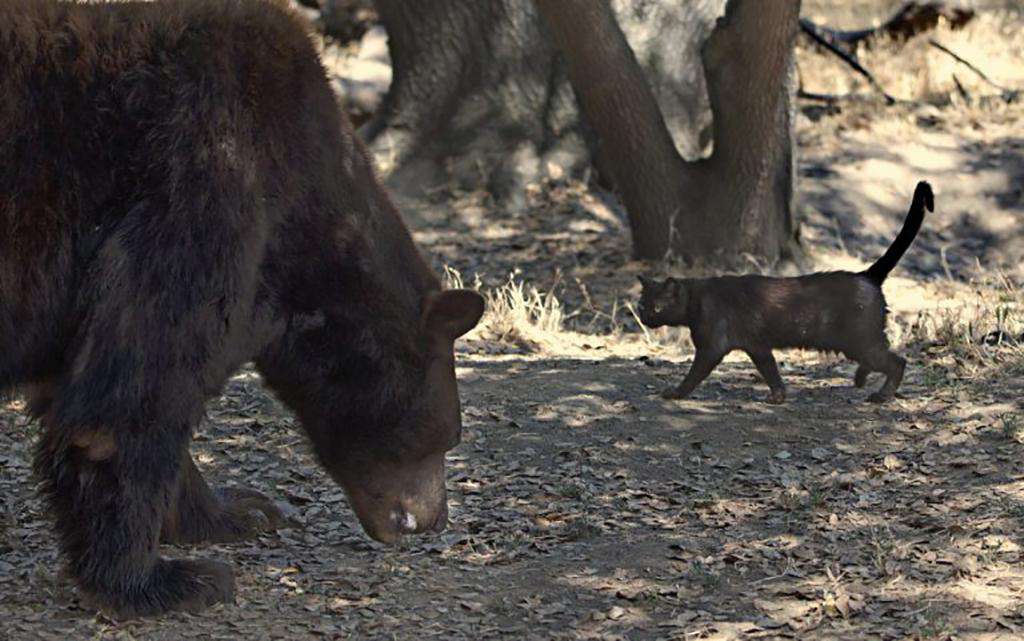
Many movies and cartoons have often featured strange pairs of friends in the animal world. These are stories that show that differences are not an obstacle to friendship, but in nature it is difficult to see, for example, a lion friend of a meerkat and a warthog like in "The Lion King". Therefore the story of a cat and a bear living together is incredible, and can be very helpful in the study of animal behavior with other species. What exactly happened? Continue reading the article!
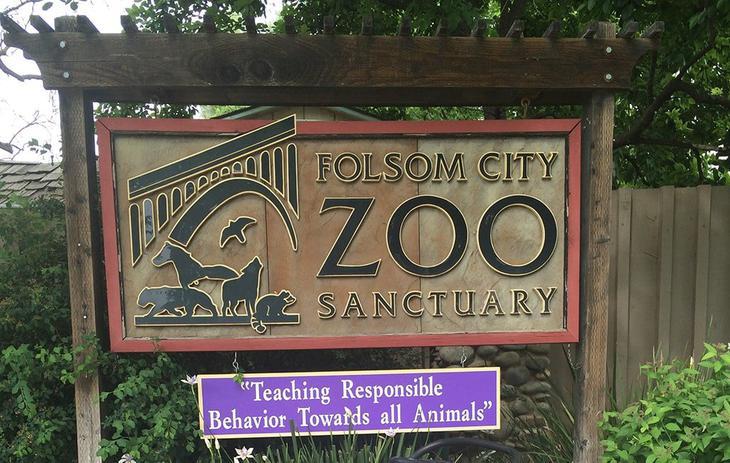
At the Folson City Zoo in Berlin one morning a black cat was spotted inside the bear cage. When visitors noticed the scene, they worried about the poor kitten's safety, fearing that the bear in front of him might not appreciate his presence and would decide to attack him. This did not happen, on the contrary! The two animals seemed to get along very well and were pleased to share that space. From that day on, the cat was no longer afraid to enter the bear enclosure, so much so that the zoo keepers nicknamed it "little bear" due to this habit.
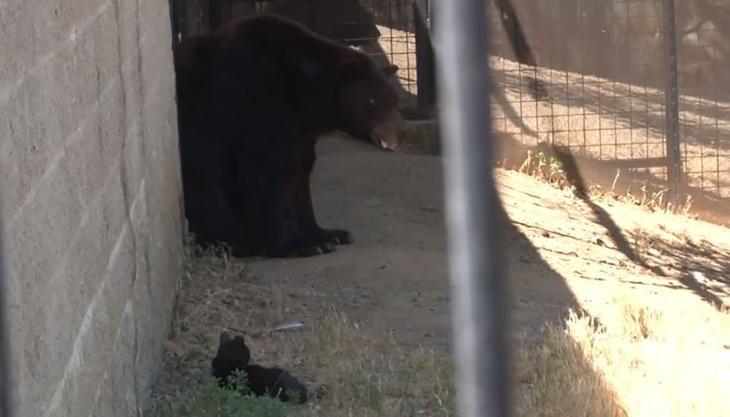
The zookeepers were somewhat amazed at the behavior of these animals. The crafty Little Bear used to enter the bear enclosure to steal some food. This behavior never aroused the bear's anger or predatory instinct which, on the contrary, seemed quite happy with the cat's visits, allowing it to draw on its food. What the guardians were witnessing was the birth of a great story of friendship.
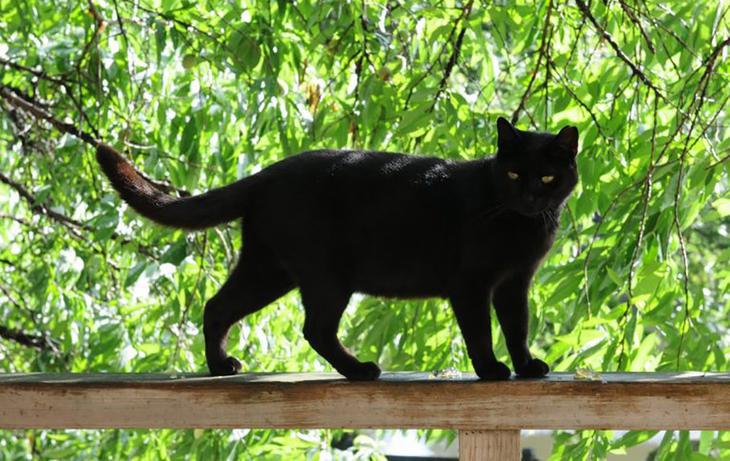
Those who worked at the zoo found this relationship somewhat unusual given the nature of the two animals. Jill Faust, keeper of the Folsom City zoo, said it was the first time in many years of service that she had seen such a thing. The couple that formed was very strange, but the zookeepers decided that they had to do everything to maintain this relationship. Such a friendship was very atypical, so it had to be preserved. They had become the attraction of the zoo: everyone wanted to see Little Bear and Big Bear.
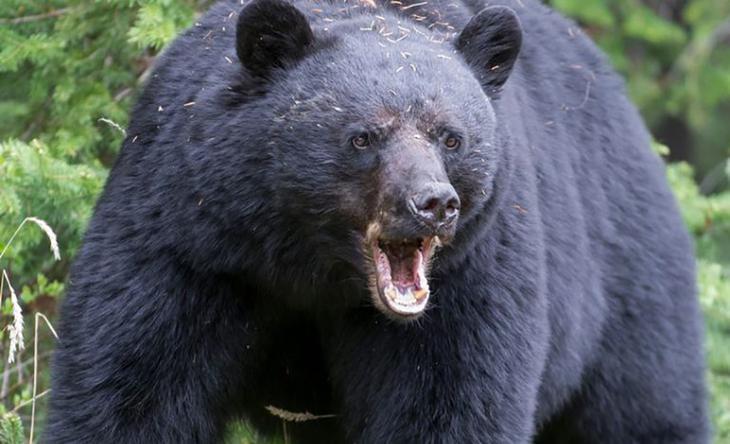
Little Bear proved to be an extremely courageous cat: among the over 100 species of animals present at the zoo, he went to steal food in the cage of the most dangerous of all! But this was the beginning of his friendship with Sequoia (name of the bear in question). Although he had never shown any signs of aggression, the guardians kept an eye on Sequoia's behavior with Little Bear, to make sure she was in no danger. Sequoia was in fact an American black bear, weighing 227 kg, and therefore potentially unstoppable.
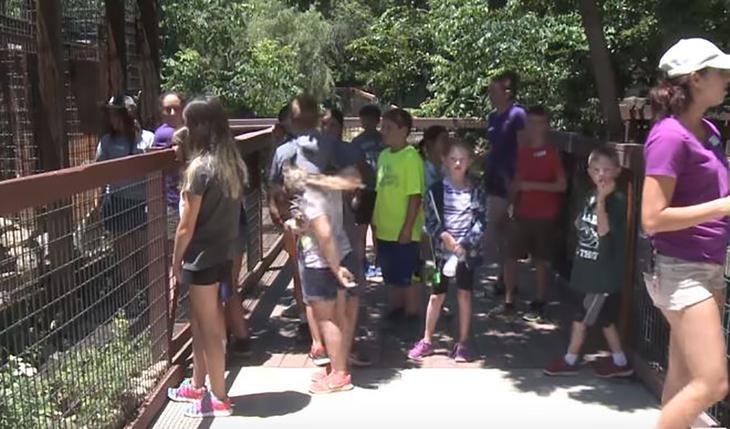
Like all black bears, Sequoia also had a large head and a long snout, small eyes and round, erect ears. He lived alone, like other bears of different races, and he needed a lot of attention to be able to live inside the zoo, which involved a huge economic outlay. Unfortunately, the zoo had a limited budget and needed financial support to be able to maintain the land and take care of the animals. For the Folsom Zoo, the relationship between Sequoia and Little Bear was the salvation, because it contributed to the growth of visitors curious to see this strange friendship between bear and cat.
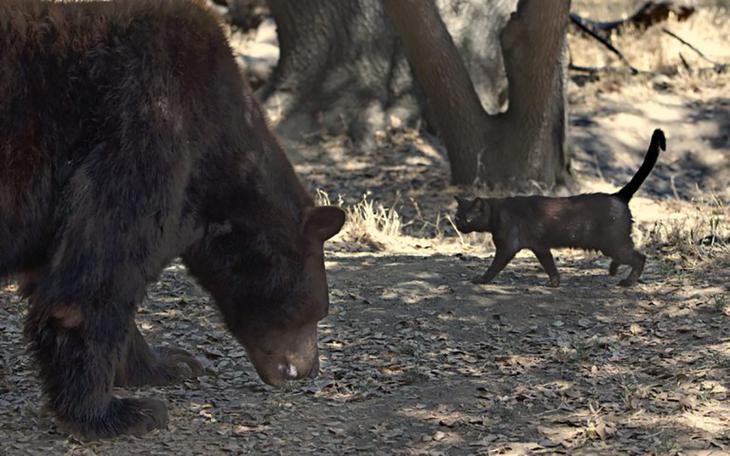
The peculiarity of this cat was that, despite being in the midst of Sequoia and the other bears enormously larger than him, he did not seem in the least intimidated by their presence. Indeed, he seemed at ease with them, so much so that some speculated that he might think he was a bear. So it was not strange to find Little Bear resting in the shade of the trees inside the enclosure, with the bears avoiding disturbing. An incredible scene but one that captures well the harmonious environment that was created in the enclosure.
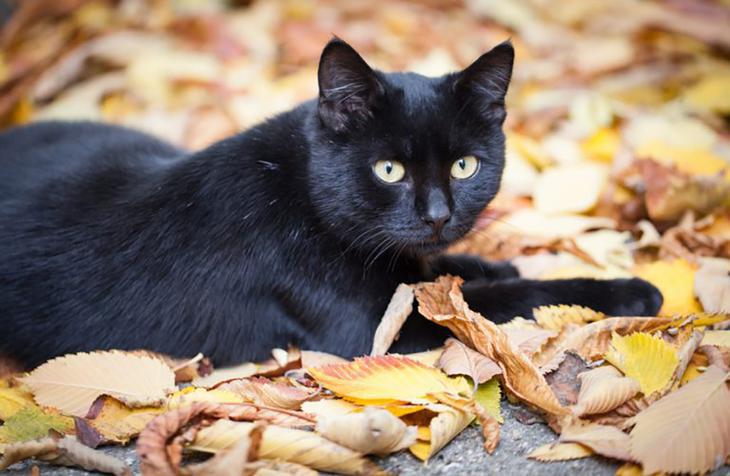
Cats have a tendency to move away from their homes, thus escaping human control, and form small colonies with other cats. This case, however, is very special: the cat has gone to join a group of bears! Added to this is the fact that Little Bear seemed to really like capturing the attention of visitors, showing himself more and more like a charismatic cat. Little Bear and Sequoia had become inseparable and seemed to be very comfortable in company. Why did they behave this way? Was it for food or something more?
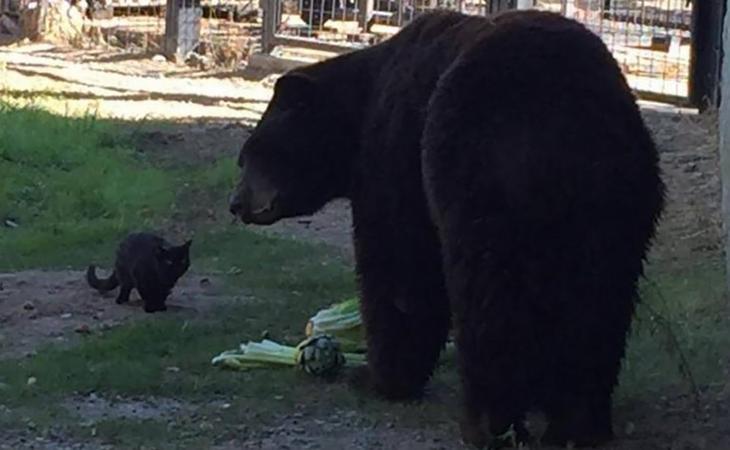
This beautiful story of friendship between cat and bear shows us that in nature everything is not determined by laws, which see prey and predators. This is the demonstration of the fact that man has yet to learn a lot about animal behavior and that the relationships between these can be of different types. Who would have imagined a relationship between these two completely different species? As mentioned at the beginning, they can only be seen in Disney films. If you liked this story of friendship between animals, continue reading the article: we will talk about the story of a small orphaned monkey who has formed a special bond with some animals in a small shelter. Enjoy the reading!
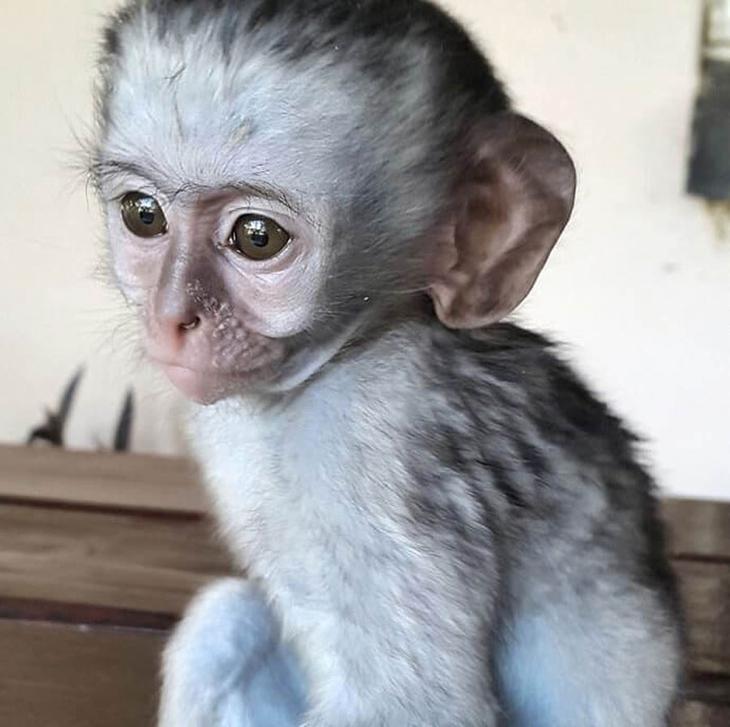
When Sarah Carter, founder of the Twala Trust Animal Sanctuary in Zimbabwe, was confronted with the scene of a green-headed baby monkey clinging to her mother's dead body, her heart broke and she decided to look after him. The story of little Horace (name chosen by his new family) is truly sad: "His mother was hit by a car on a busy road. She was found near her body on the side of the road. He was very lucky to have been picked up by the right person who brought him very quickly to this shrine, ”Sarah confessed to Dodo.
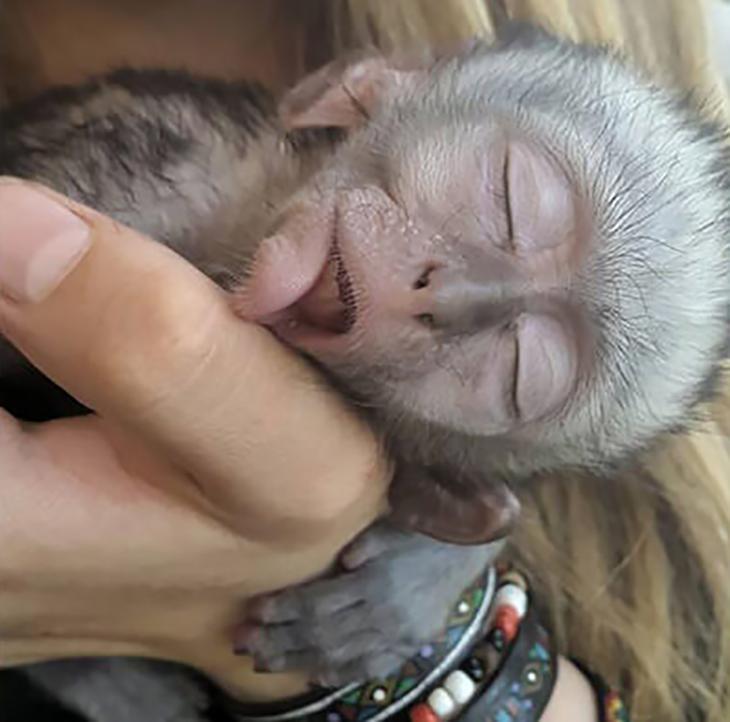
Green monkeys have a 40 to 60 centimeter long head, 70 centimeter long tail, and their weight varies between 4 to 6 kilograms, with males tending to get bigger and bigger than females. Horace was still a puppy when he was taken to the shelter, he was the size of the palm of a hand, and it was immediately evident how helpless he was and needed help. Which he found at the Twala Trust Animal Sanctuary, created to provide shelter for wild animals in distress. Although at first he was very frightened, the little primate quickly adapted to the new environment, in the midst of cats, dogs, lions and antelopes.
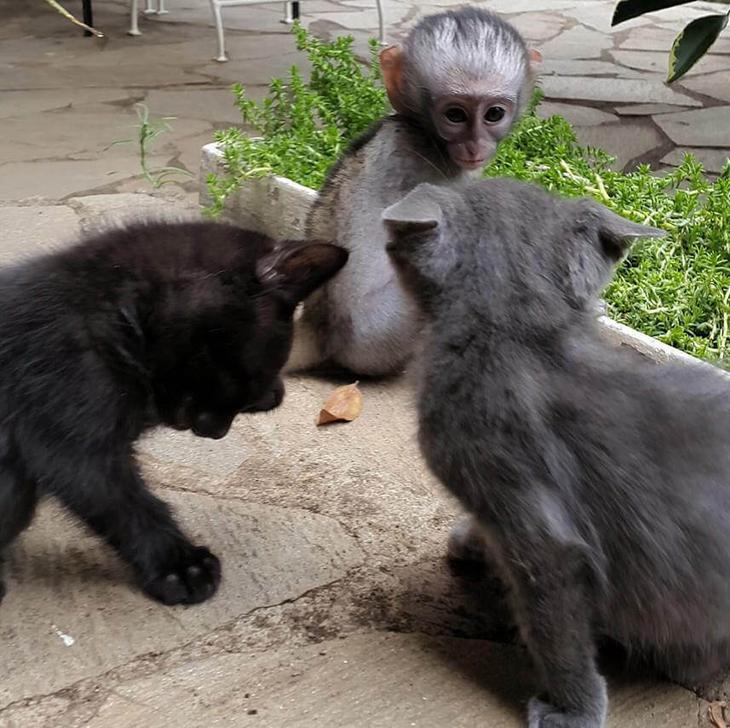
Green monkeys are native to eastern and southern Africa: they can be found in Mozambique, Somalia, Zimbabwe, Kenya, Rwanda, Burundi, Tanzania, Malawi, Zambia, Uganda, Botswana, Ethiopia, Swaziland. Their favorite habitat is the woods and the savannah, so it is easy to understand that it was not so obvious that the little Horace could find himself well in an environment where various species coexisted, especially due to the presence of man. Despite this, his inclusion was favored by the incredible welcome that the other animals in the shelter gave him: "We had many stray animals and we were short-staffed, but we had no problems because Horace was able to integrate with the others. without any intervention on our part, ”Carter said.
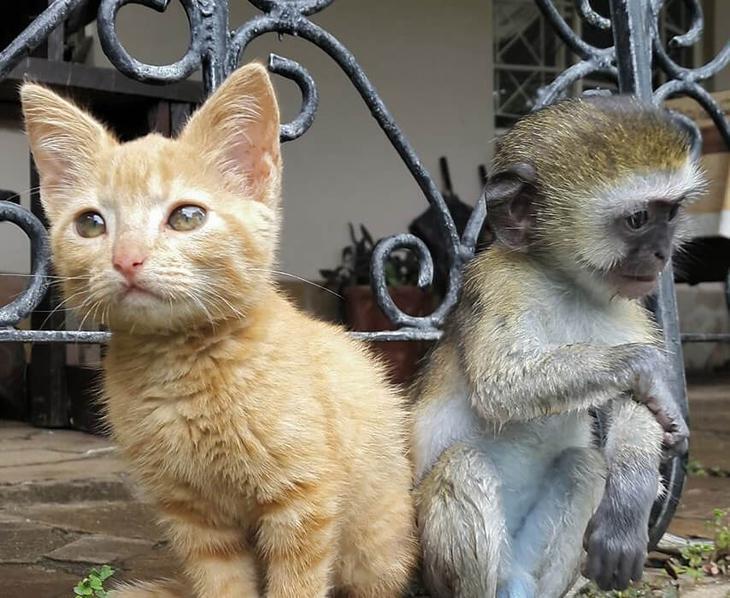
Horace immediately bonded with the shelter's cat colony. As soon as she crossed the gates, the monkey was immediately attracted to the cats, with whom a beautiful friendship was born. We do not know why he chose cats as his first interlocutors, most likely because they were less intimidating and were of the same size, but it is undeniable that he had a special feeling with them. The colony's elders quickly learned to accept Horace as one of them and he was treated very well, facilitating his insertion into the Twala shelter.

Horace and the cats had now become best friends! A special bond had developed between them, it seemed as if the felines felt obliged to take care of that little orphan who arrived at the shelter, they felt responsible for his safety. The common opinion about cats tends to describe them as difficult and complicated animals, but on this occasion they showed how open and loving they can be towards other species as well. Anyone who owns a cat knows how wrong the prejudices about these animals are and this story is proof of this.
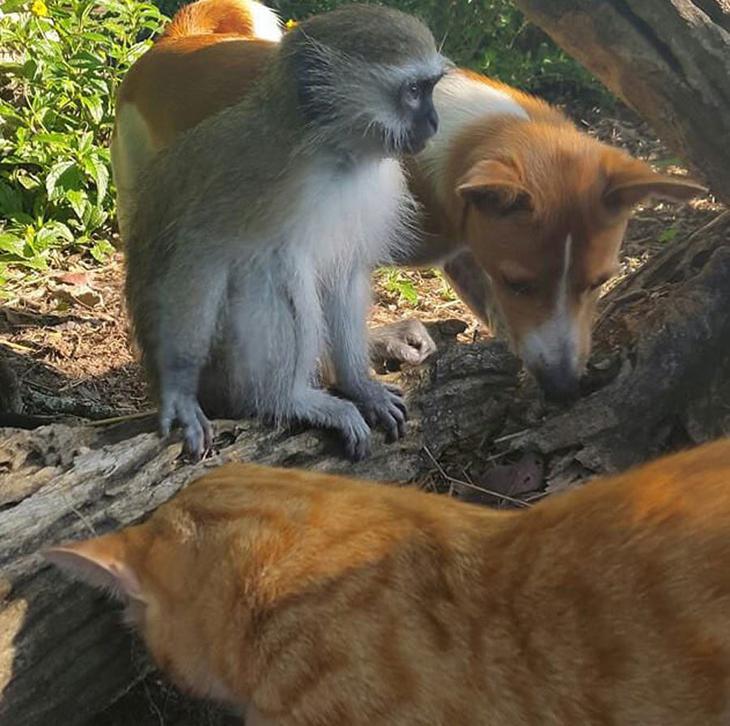
Over time Horace made new friendships with the other guests of the Twala refuge. One of her closest friends is Keiko, a rescue dog hosted by the facility. In fact, Twala housed many animals found abandoned or abused, including the sweet Keiko. Sarah Carter works in constant synergy with her team to provide help and assistance to these animals who lived in difficult conditions. Among these there was also Horace, who as soon as he arrived became the protagonist of very funny episodes. Read on to see what the little monkey was up to at the shelter!
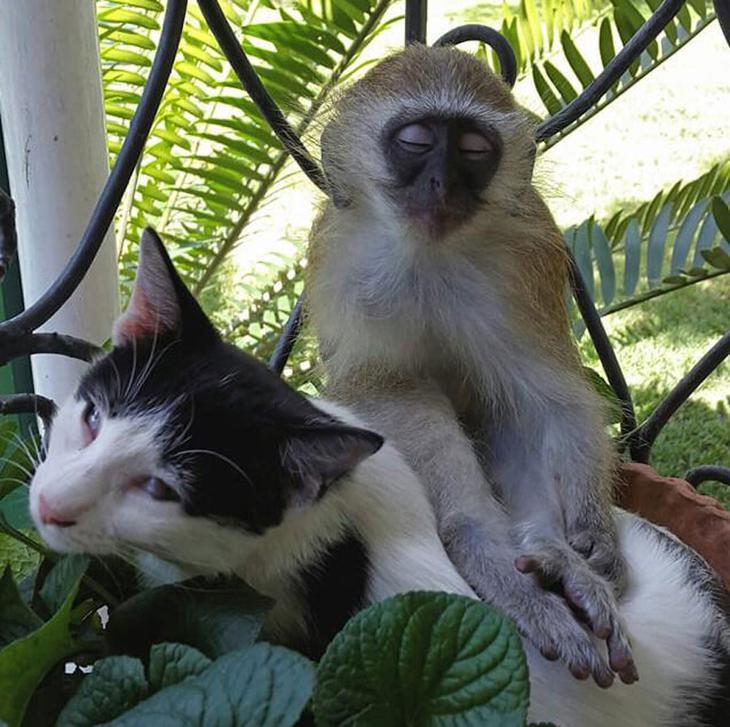
Horace earned the title of laziest guest in the shelter! He used to take long naps during the day wherever he was, especially when he cuddled with his cat friends. "Horace is a master of sleep. He struggles with this because he is afraid of missing something ... and he likes to take naps and sleep wherever he wants," Sarah Carter told the Daily Mail in 2015. Like all children, even baby monkey heads green need an afternoon nap to recover the energy needed to grow. So also Horace got long sleeps during the day, coming to hold the record for the longest nap in the whole refuge. Still no host animal has managed to beat him!
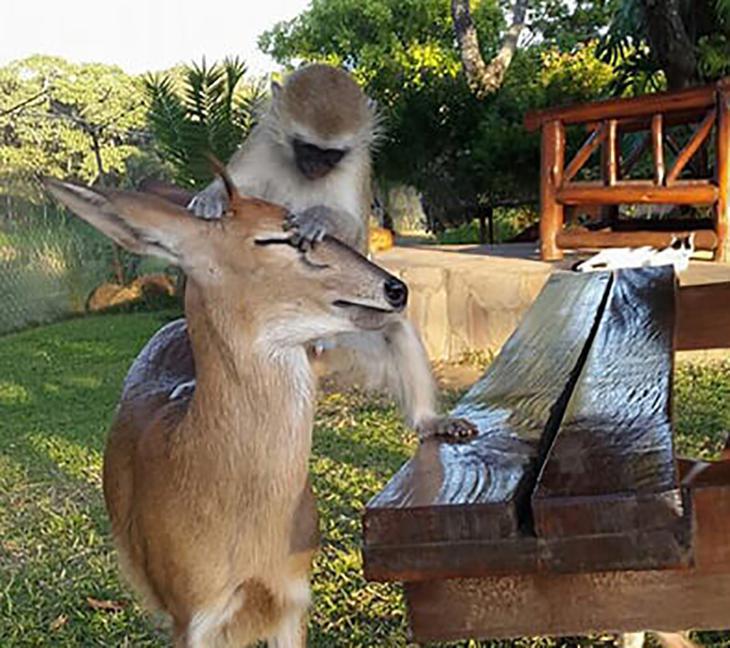
Horace's strong personality also led her to make friends with the antelope of the refuge, forming an unusual couple in the animal world. But Horace was so friendly and playful that he never had an argument with any animal. "Horace is very confident and enjoys growing up in a different environment - says Carter - He has many human and animal friends and is rarely alone. He is playful, extremely intelligent and infinitely funny." This is also due to the intrinsic characteristics in southern green monkeys, which tend to adapt to humans in a more evident way than other primates. In fact, sometimes it is possible to witness invasions in the cities, so much so as to create discomfort, but overall the species is not considered a danger.
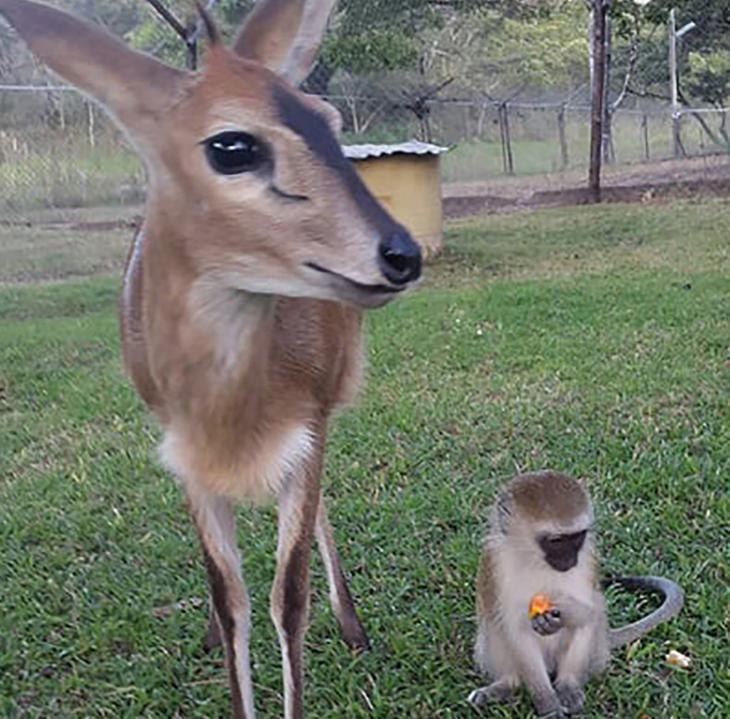
"His biggest vice is being irresistibly attracted to food he isn't allowed to eat, places he shouldn't be, things he shouldn't touch," Carter told the Daily Mail. Horace is fond of fresh fruit and vegetables and is attracted to healthy food, only when he is in the company of other animals he also likes to eat their food but it is possible that it is not suitable for his diet. This little monkey in fact tended to adopt the habits of other animals when he spent a lot of time with them. It is strange that a monkey imitates the behavior of other species, but Horace seemed very amused in doing so.
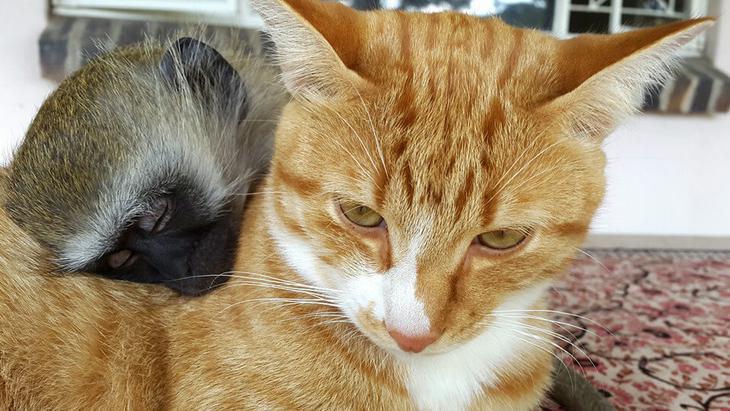
His love of food even pushes Horace to "cheat" his animal friends. For example, he sometimes pretends to go to sleep with Freddie (the cat in the photo) and then steals his food. A trick worthy of the best Arsenio Lupine! Carter told the Daily Mail: "Horace always makes me laugh, he's a big thief, pretends to be wise and sneaks up to steal a pen, piece of paper or food. He can even hug someone, a person or a animal to distract him and steal something ". Horace uses all his wits to get to his goal; he is a monkey after all, and primates are famous for their intelligence and cunning.
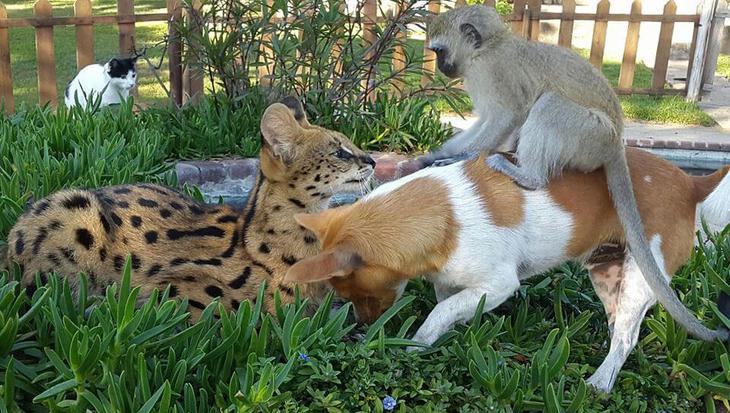
"He is very curious, he often comes to look at me with charm before stealing my pen or jumping on my keyboard," said the owner of the shelter. Although it can be annoying, the animals of the structure seemed to appreciate the curiosity of the monkey. The great thing about the Twala shelter is that the animals manage to live together without their instincts taking over. This has made it possible to create a climate of harmony, where each new animal inserted is able to adapt. Horace's story demonstrates how all animals can coexist.
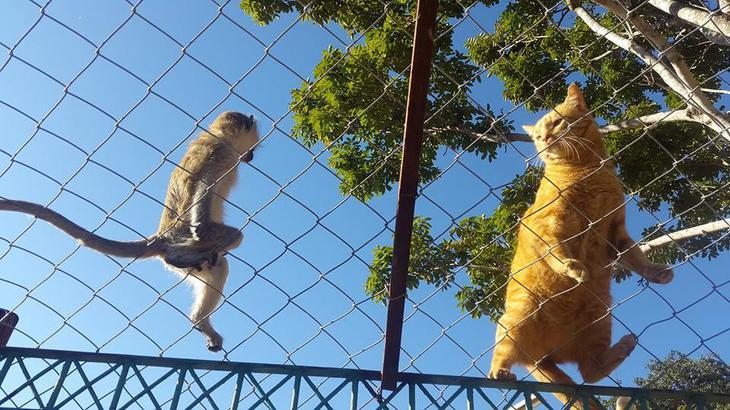
The incredible thing is that Horace, having grown up mainly among cats, has taken on typical feline behaviors, which is also funny to watch. "He runs in the dark with the cats in the middle of the night. All the other monkeys go to sleep when it's dark, because it's in their nature. Meanwhile, Horace walks around the garden with his friends. This creature is a hooligan," he said. Carter to Dodo. When not sleeping Horace is really hyperactive, he runs and jumps everywhere. But what is his secret to being able to make so many friends? This is the question that scholars ask themselves.
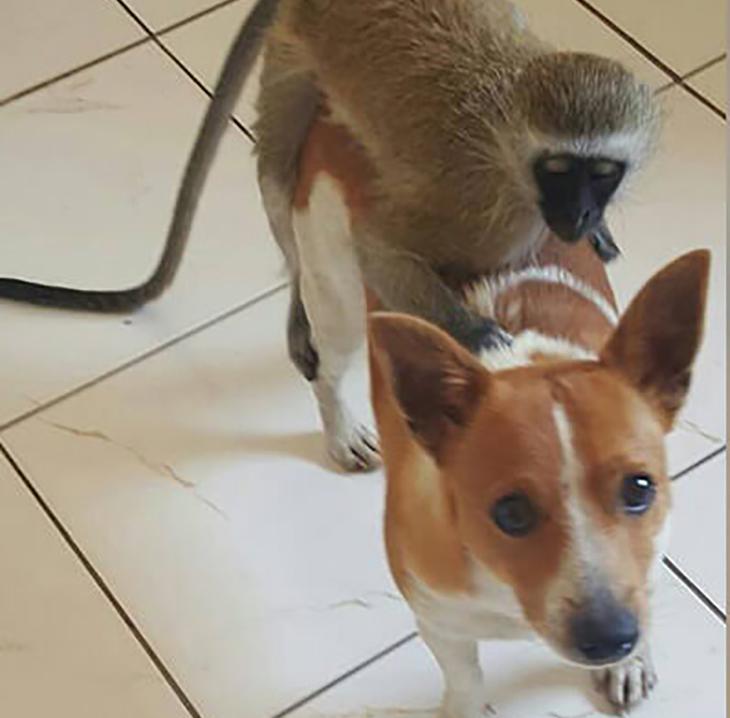
Another very strange but funny behavior of Horace is literally riding his dog friend Keiko. Their friendship is so strong that Keiko is willing to carry the monkey on her shoulders for the refuge. Even though he was grown up, Horace didn't want to give up some puppy behaviors, so much so that his animal friends still treat him as such. The situation is idyllic for the little monkey, because the friendships she has formed have formed an indissoluble bond.
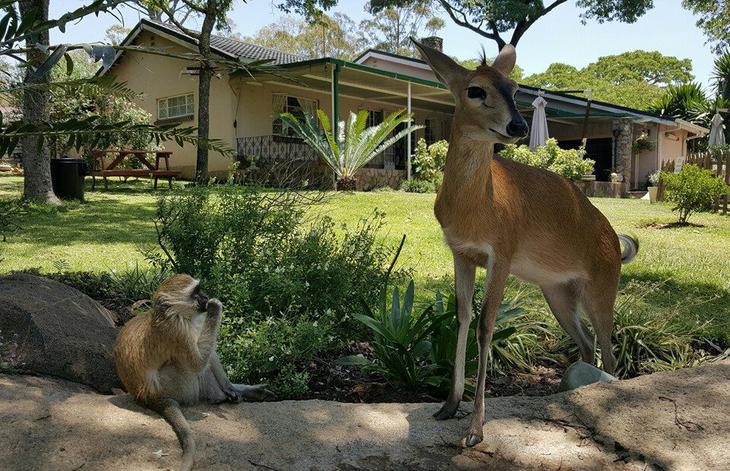
What characterizes Horace are his ways of doing: growing up in a shelter is certainly different than doing it in nature in full freedom, but this has made the monkey a unique example of its kind. "He is a thinker, always sitting in the middle of nature, turning a leaf or a flower or a twig in his hands, often lost in thought," Carter told the Daily Mail. Who knows what Horace will think! Could living among other animals have influenced his reflective soul? Southern green monkeys live in predominantly female groups, being the only monkey of this species among so many different animals will have formed their character.
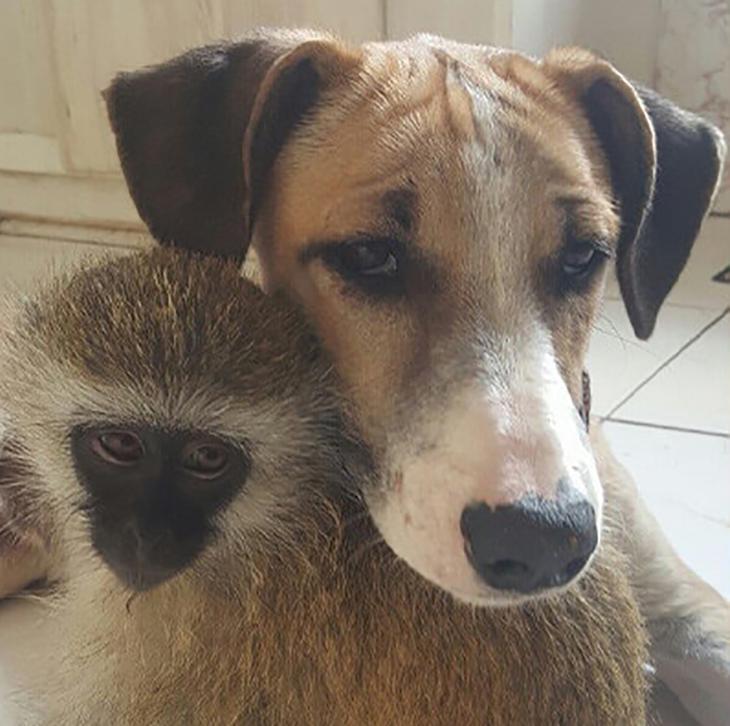
Many turned up their noses when they heard the story of Horace for the first time, convinced that leaving animals locked inside a multi-species shelter is something that goes against their nature. But Carter disagreed: "Horace has friends here and he's safe. He has the support of everyone at the shelter, humans and animals." In fact, the little monkey was destined to certain death when she was helped, being very small and having lost her mother in an accident. The Twala refuge gave him another chance, where he found a family in which he integrated very well.
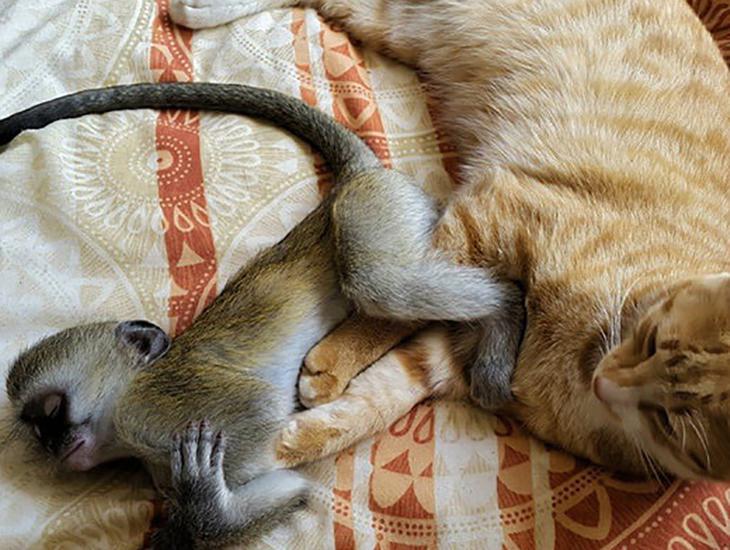
The Sarah Carte Sanctuary, the refuge where Horace was cared for, is the perfect example of how all animals can coexist in certain circumstances. For example, in this photo we can see the idyllic relationship between the monkey and the cat Freddie, one of his best friends. "We get a lot of strays, so they can't always be put with the same species. But it's really healing and comforting for them to be with another species, whether it's different or not," Carter said. This model of coexistence could also be an example for humans, who could be able to create a less divisive and more welcoming society.
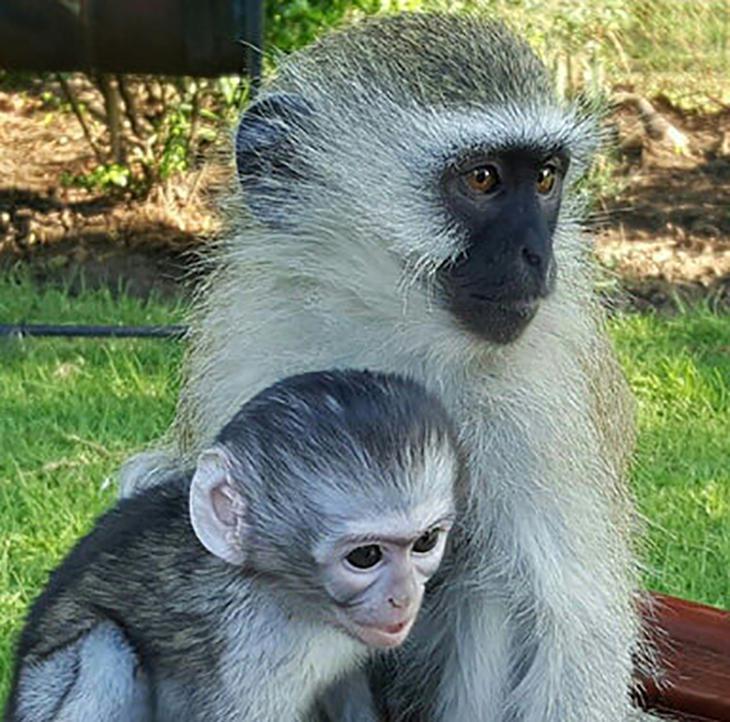
Obviously Sarah Carter knows that it is important for these wild animals to have relationships with specimens of their species, so try to accommodate them whenever possible. One morning he arrived at the Twala Hamish shelter, a baby green monkey from the south, and there was no doubt as to who should take care of him! Horace is a very curious animal and also very welcoming to newcomers. The little orphan who had just arrived immediately bonded with Horace, perhaps also because the latter unconsciously felt a closeness to his story. This special bond is the result of a behavior that is hardly seen in captivity in monkeys of this species. So Hamish had a fundamental hand to be able to integrate into the shelter, in the midst of all the animals present.
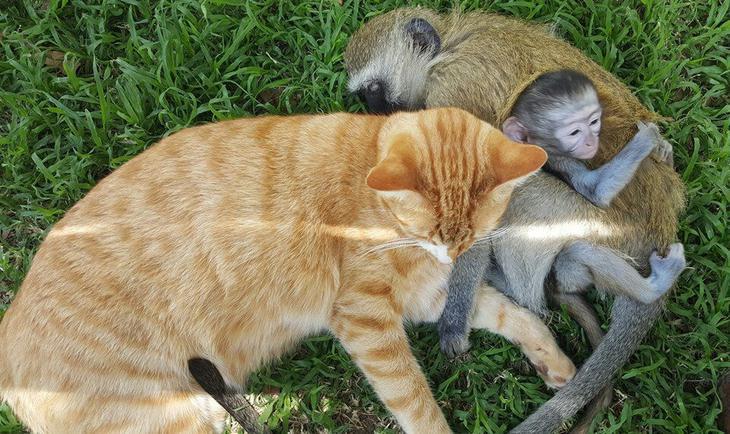
Hamish immediately fell in love with Horace, the two in fact became inseparable. Horace's experience meant that even the smallest monkey was able to understand how all animals could coexist within the same space. "We learned that from Horace," Carter said. "They form an incredible bond. It brings a lot of comfort to everyone. It's scary but amazing how animals can show so much compassion. Horace's story is the best example to illustrate this."
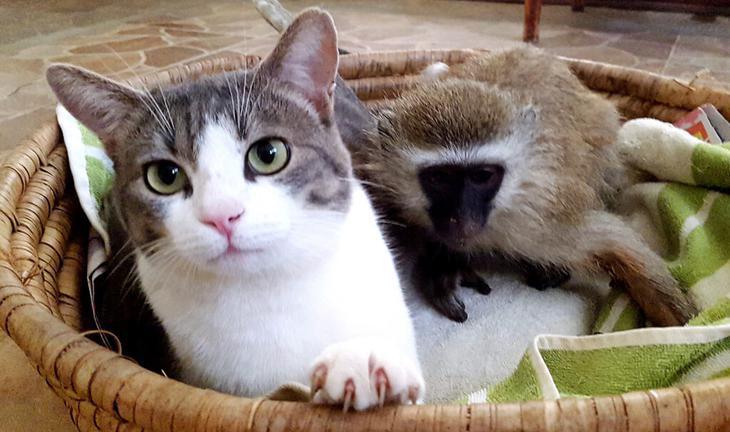
Even when grown up, Horace always showed puppy attitudes, but often these could lead to serious consequences. Like that time when, moved by too much curiosity, he touched the wires of the current. "He was found unconscious and badly burned. It is an absolute miracle that he survived such a severe shock ... Horace has always lived free as he should, but ... we cannot protect him from the many dangers to which animals are exposed" reads from a post published on Facebook by the refuge staff. The poor monkey really risked his life, like that time as a puppy before he was rescued by his human friends.
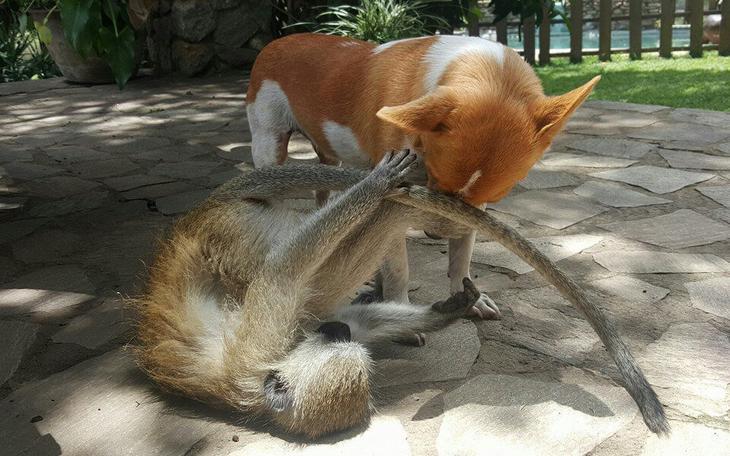
Fortunately Horace survived the terrible accident, but to treat him the vets had to amputate his arm. Fortunately, the monkey's so much vitality allowed him to return in full force to the refuge. "Horace can go wherever he wants. There's nothing to stop him from leaving, but he's decided to stay ... He really has a better life at the shelter," Carter told Dodo. The little monkey took a little while to recover and returned to do the usual teasing to all the animals in the shelter! "We are happy that the animals show their gratitude and stay with us too," commented Carter. We were able to discover two wonderful stories of friendship between animals of different species that show us that differences do not matter in the animal world, just the will to understand what is different is enough.